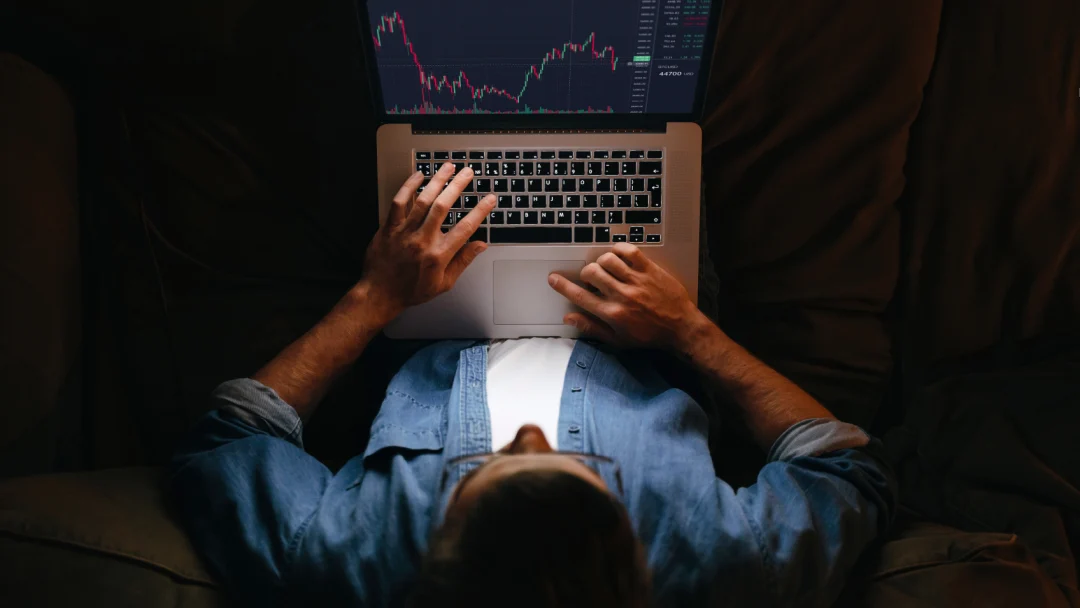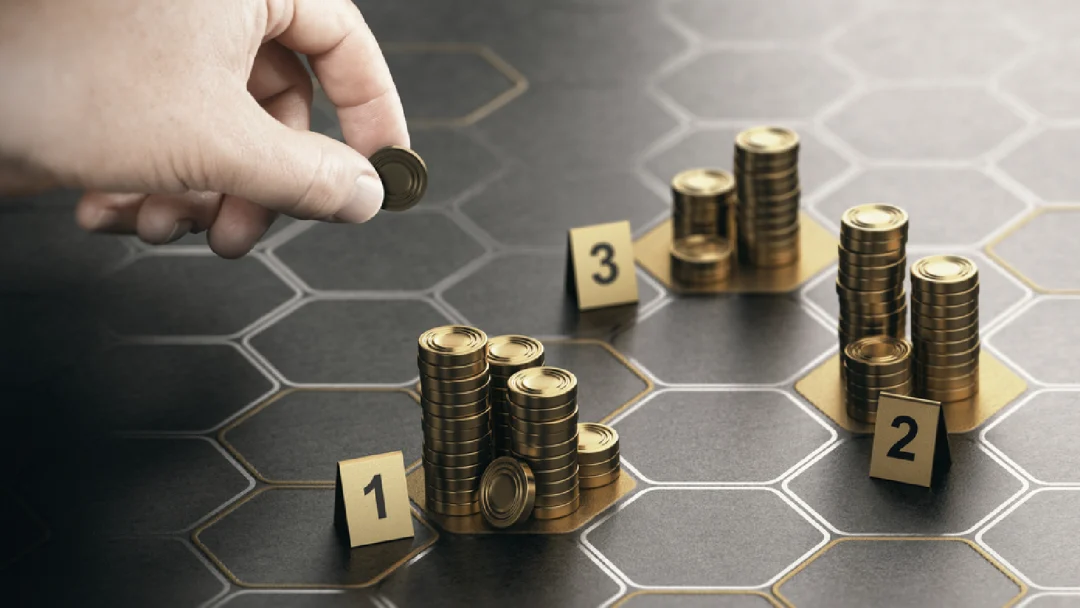อัพเดทล่าสุด

คู่มือการเงิน: วางแผนอย่างไรให้มั่นคงและเติบโต (อัพเดทล่าสุด)
การวางแผนทางการเงินเป็นหัวใจสำคัญในการสร้างความมั่นคงและเพิ่มโอกาสในการบรรลุเป้าหมายทางการเงิน การมีแผนที่ดีช่วยให้สามารถควบคุมรายรับและรายจ่ายได้อย่างมีประสิทธิภาพ ลดความเสี่ยงจากหนี้สิน และเพิ่มโอกาสในการออมและลงทุนเพื่ออนาคตอย่างยั่งยืน...

คู่มือลงทุนหุ้น: สร้างผลตอบแทนที่น่าสนใจฉบับมือใหม่
การลงทุนหุ้นเป็นทางเลือกที่น่าสนใจสำหรับผู้ที่ต้องการเพิ่มพูนความมั่งคั่งในระยะยาว แต่สำหรับลงทุนหุ้นมือใหม่ การเริ่มต้นอาจดูซับซ้อนและเต็มไปด้วยคำถาม ไม่ว่าจะเป็นเรื่องของพื้นฐานการลงทุน กลยุทธ์การเลือกหุ้น หรือการบริหารความเสี่ยง...

คู่มือลงทุนทองมือใหม่ รู้ก่อนเริ่มลงทุน ทำกำไรได้จริง (อัพเดทล่าสุด)
ทองคำเป็นหนึ่งในสินทรัพย์ที่ได้รับความนิยมมาอย่างยาวนาน เนื่องจากมีมูลค่าและเป็นที่ยอมรับทั่วโลก ไม่ว่าคุณจะเป็นนักลงทุนมือใหม่หรือผู้ที่กำลังมองหาทางเลือกในการกระจายพอร์ต...

คู่มือลงทุนสำหรับมือใหม่ เริ่มต้นอย่างมั่นใจ (อัพเดท 2025)
การลงทุนเป็นกุญแจสำคัญสู่ความมั่นคงทางการเงิน หากคุณต้องการให้เงินทำงานแทนคุณ ไม่ว่าจะเป็นหุ้น กองทุนรวม อสังหาริมทรัพย์ หรือสินทรัพย์อื่นๆ สิ่งแรกที่ต้องมีคือความรู้และแนวทางที่ถูกต้อง เริ่มต้นให้มั่นใจด้วยการศึกษาข้อมูลพื้นฐาน วางแผนให้รอบคอบ...

21 อาชีพเสริม หารายได้เสริมน่าทำสำหรับมือใหม่ เริ่มง่าย กำไรดี
ทุกวันนี้ การพึ่งพารายได้จากงานประจำเพียงอย่างเดียวอาจไม่เพียงพอกับค่าใช้จ่ายที่เพิ่มขึ้น หลายคนเริ่มตระหนักถึงความจำเป็นในการมองหา "อาชีพเสริม" เพื่อสร้างรายได้เพิ่มเติม ไม่ว่าจะเป็นเพื่อเก็บออม...

คู่มือการเงิน: วางแผนอย่างไรให้มั่นคงและเติบโต (อัพเดทล่าสุด)
การวางแผนทางการเงินเป็นหัวใจสำคัญในการสร้างความมั่นคงและเพิ่มโอกาสในการบรรลุเป้าหมายทางการเงิน การมีแผนที่ดีช่วยให้สามารถควบคุมรายรับและรายจ่ายได้อย่างมีประสิทธิภาพ ลดความเสี่ยงจากหนี้สิน...

คู่มือลงทุนหุ้น: สร้างผลตอบแทนที่น่าสนใจฉบับมือใหม่
การลงทุนหุ้นเป็นทางเลือกที่น่าสนใจสำหรับผู้ที่ต้องการเพิ่มพูนความมั่งคั่งในระยะยาว แต่สำหรับลงทุนหุ้นมือใหม่ การเริ่มต้นอาจดูซับซ้อนและเต็มไปด้วยคำถาม ไม่ว่าจะเป็นเรื่องของพื้นฐานการลงทุน...

คู่มือการเงิน: วางแผนอย่างไรให้มั่นคงและเติบโต (อัพเดทล่าสุด)
การวางแผนทางการเงินเป็นหัวใจสำคัญในการสร้างความมั่นคงและเพิ่มโอกาสในการบรรลุเป้าหมายทางการเงิน การมีแผนที่ดีช่วยให้สามารถควบคุมรายรับและรายจ่ายได้อย่างมีประสิทธิภาพ ลดความเสี่ยงจากหนี้สิน และเพิ่มโอกาสในการออมและลงทุนเพื่ออนาคตอย่างยั่งยืน...

คู่มือลงทุนหุ้น: สร้างผลตอบแทนที่น่าสนใจฉบับมือใหม่
การลงทุนหุ้นเป็นทางเลือกที่น่าสนใจสำหรับผู้ที่ต้องการเพิ่มพูนความมั่งคั่งในระยะยาว แต่สำหรับลงทุนหุ้นมือใหม่ การเริ่มต้นอาจดูซับซ้อนและเต็มไปด้วยคำถาม ไม่ว่าจะเป็นเรื่องของพื้นฐานการลงทุน กลยุทธ์การเลือกหุ้น หรือการบริหารความเสี่ยง...

คู่มือลงทุนทองมือใหม่ รู้ก่อนเริ่มลงทุน ทำกำไรได้จริง (อัพเดทล่าสุด)
ทองคำเป็นหนึ่งในสินทรัพย์ที่ได้รับความนิยมมาอย่างยาวนาน เนื่องจากมีมูลค่าและเป็นที่ยอมรับทั่วโลก ไม่ว่าคุณจะเป็นนักลงทุนมือใหม่หรือผู้ที่กำลังมองหาทางเลือกในการกระจายพอร์ต...

คู่มือลงทุนสำหรับมือใหม่ เริ่มต้นอย่างมั่นใจ (อัพเดท 2025)
การลงทุนเป็นกุญแจสำคัญสู่ความมั่นคงทางการเงิน หากคุณต้องการให้เงินทำงานแทนคุณ ไม่ว่าจะเป็นหุ้น กองทุนรวม อสังหาริมทรัพย์ หรือสินทรัพย์อื่นๆ สิ่งแรกที่ต้องมีคือความรู้และแนวทางที่ถูกต้อง เริ่มต้นให้มั่นใจด้วยการศึกษาข้อมูลพื้นฐาน วางแผนให้รอบคอบ...
การเงิน-การลงทุน

21 อาชีพเสริม หารายได้เสริมน่าทำสำหรับมือใหม่ เริ่มง่าย กำไรดี
ทุกวันนี้ การพึ่งพารายได้จากงานประจำเพียงอย่างเดียวอาจไม่เพียงพอกับค่าใช้จ่ายที่เพิ่มขึ้น...

คู่มือการเงิน: วางแผนอย่างไรให้มั่นคงและเติบโต (อัพเดทล่าสุด)
การวางแผนทางการเงินเป็นหัวใจสำคัญในการสร้างความมั่นคงและเพิ่มโอกาสในการบรรลุเป้าหมายทางการเงิน...

คู่มือลงทุนหุ้น: สร้างผลตอบแทนที่น่าสนใจฉบับมือใหม่
การลงทุนหุ้นเป็นทางเลือกที่น่าสนใจสำหรับผู้ที่ต้องการเพิ่มพูนความมั่งคั่งในระยะยาว...

คู่มือลงทุนทองมือใหม่ รู้ก่อนเริ่มลงทุน ทำกำไรได้จริง (อัพเดทล่าสุด)
ทองคำเป็นหนึ่งในสินทรัพย์ที่ได้รับความนิยมมาอย่างยาวนาน เนื่องจากมีมูลค่าและเป็นที่ยอมรับทั่วโลก...

คู่มือลงทุนสำหรับมือใหม่ เริ่มต้นอย่างมั่นใจ (อัพเดท 2025)
การลงทุนเป็นกุญแจสำคัญสู่ความมั่นคงทางการเงิน หากคุณต้องการให้เงินทำงานแทนคุณ ไม่ว่าจะเป็นหุ้น...
ธุรกิจ
No Results Found
The page you requested could not be found. Try refining your search, or use the navigation above to locate the post.
เทรดเดอร์
No Results Found
The page you requested could not be found. Try refining your search, or use the navigation above to locate the post.
คริปโต
No Results Found
The page you requested could not be found. Try refining your search, or use the navigation above to locate the post.
หุ้น
No Results Found
The page you requested could not be found. Try refining your search, or use the navigation above to locate the post.
เทคโนโลยี
No Results Found
The page you requested could not be found. Try refining your search, or use the navigation above to locate the post.
อสังหาริมทรัพย์
No Results Found
The page you requested could not be found. Try refining your search, or use the navigation above to locate the post.
เศรษฐกิจ
No Results Found
The page you requested could not be found. Try refining your search, or use the navigation above to locate the post.